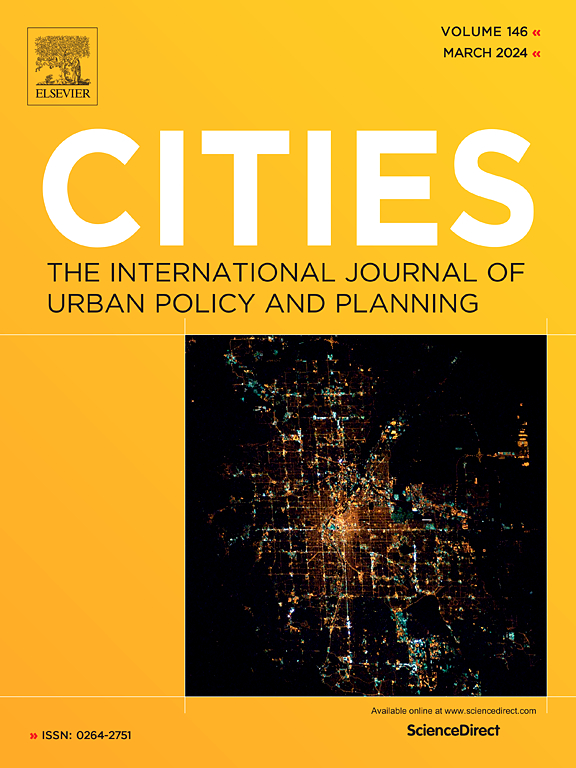影响首尔城市公园利用率的因素:电信数据的启示
IF 6
1区 经济学
Q1 URBAN STUDIES
引用次数: 0
摘要
本研究利用电信公司的大数据对首尔 119 个街区公园的流动人口进行分析,以确定城市公园的实际人口,并研究影响其利用率的因素。公园利用率是指公园单位面积内的人数。影响公园利用率的因素包括公园的个体特征,如老化程度、公园类型、公园内部设施特征和公园位置特征。公园位置特征是通过网络分析得出的,以研究每个公园服务区内的交通便利性、土地利用和人口。通过分层回归模型,我们发现年龄和公园类型等单个公园特征对公园使用的影响最大,其次是公园位置和内部设施特征。具体来说,公园年龄增加一岁,利用率就会下降 1.2%。与城市/区域带街区公园相比,生活带街区公园的利用率高出 5.3 倍,步行带街区公园的利用率高出 1.44 倍。有教育设施的公园和靠近地铁站的公园使用率更高。此外,公园附近的商业区越大、住宅区越少,邻里公园的使用率就越高。本文章由计算机程序翻译,如有差异,请以英文原文为准。
Factors affecting urban park utilization in Seoul: Insights from telecommunication data
This study utilizes big data from telecommunication companies to analyze the transient population in 119 neighborhood parks in Seoul in order to determine the actual population of urban parks and investigate the factors influencing their utilization. Park utilization is defined as the number of people per unit area of a park. The factors affecting park utilization include individual park characteristics such as the degree of aging, park type, internal park facility characteristics, and park location characteristics. Park location characteristics were derived using network analysis to examine accessibility, land use, and population within each park's service area. Using a hierarchical regression model, we found that individual park characteristics, including age and park type, had the greatest impact on park use, followed by park location and internal facility characteristics. Specifically, as park age increased by one year, utilization decreased by 1.2 %. Utilization was 5.3 times higher in living zone neighborhood parks and 1.44 times higher in walking zone neighborhood parks compared to city/regional zone neighborhood parks. Parks with educational facilities and those situated near subway stations were more likely to be used. Additionally, the larger commercial areas and fewer residential areas near the park, the greater the utilization of neighborhood parks.
求助全文
通过发布文献求助,成功后即可免费获取论文全文。
去求助
来源期刊

Cities
URBAN STUDIES-
CiteScore
11.20
自引率
9.00%
发文量
517
期刊介绍:
Cities offers a comprehensive range of articles on all aspects of urban policy. It provides an international and interdisciplinary platform for the exchange of ideas and information between urban planners and policy makers from national and local government, non-government organizations, academia and consultancy. The primary aims of the journal are to analyse and assess past and present urban development and management as a reflection of effective, ineffective and non-existent planning policies; and the promotion of the implementation of appropriate urban policies in both the developed and the developing world.
 求助内容:
求助内容: 应助结果提醒方式:
应助结果提醒方式:


